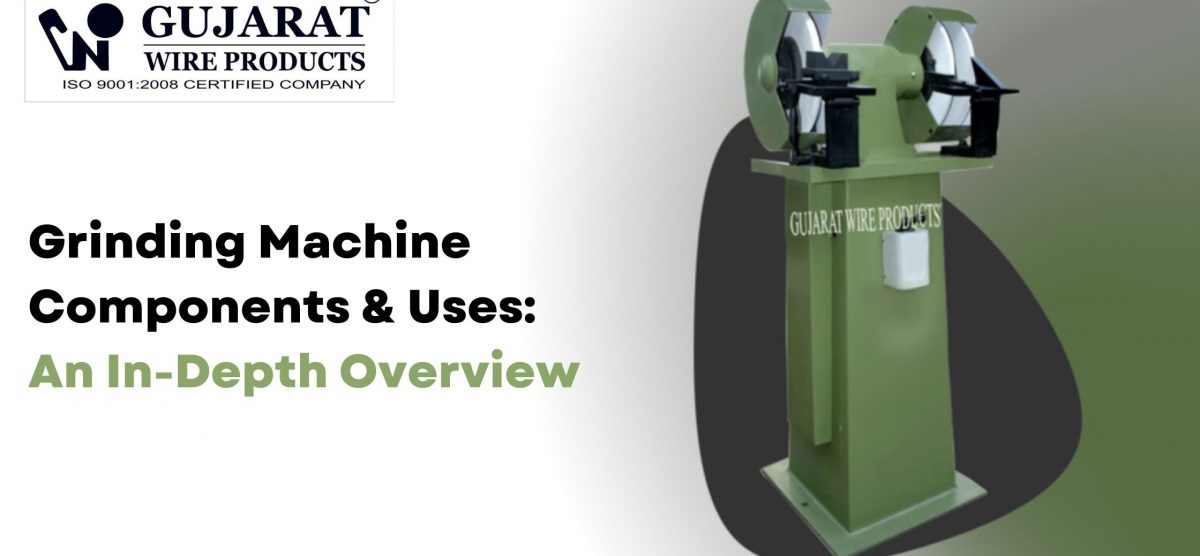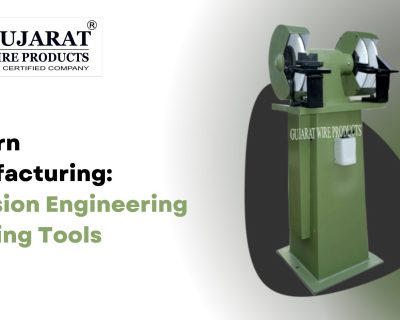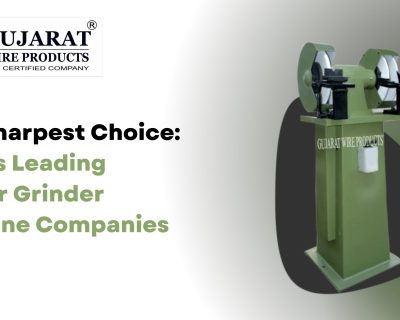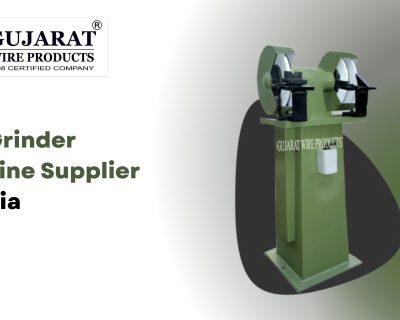Blog

Grinding Machine Components & Uses: An In-Depth Overview
Introduction
Production tolerances make or break profitability in precision manufacturing. Miss dimensional specs by 50 microns and automotive components get rejected at quality control. Exceed surface roughness targets and bearing assemblies fail prematurely in the field. The grinding machine market reached USD 6.5 billion in 2025, driven by industries demanding accuracy levels traditional machining can’t deliver. Yet most buyers focus on wheel diameter and motor horsepower while ignoring the component interactions that determine whether a machine holds ±0.000025mm accuracy across eight-hour shifts. Modern grinding systems achieve tolerances between 1.3 to 13 microns for diameter and 0.25 to 2.5 microns for roundness—specifications that separate high-value aerospace components from commodity metalwork. This guide examines the core components enabling precision, industrial applications where grinding becomes essential rather than optional, and selection criteria that determine long-term value beyond purchase price.
Core Machine Components
Base and Column Structure
The machine bed absorbs vibration from grinding wheel rotation and workpiece feed motion. Heavy cast iron or polymer concrete construction dampens resonance that degrades surface finish. Column rigidity maintains wheel head alignment under cutting forces—flexing here translates directly into dimensional errors on the workpiece.
Grinding Wheel and Wheel Head
The grinding wheel is the actual cutting tool, composed of abrasive particles bonded in a matrix. Wheel head assemblies rotate the wheel at speeds ranging from 1,800 to 3,600 RPM depending on diameter and material. Precision spindle bearings maintain rotational accuracy—runout above 5 microns shows up as waviness on finished surfaces.
Wheel specifications determine material removal rates and surface quality. Aluminum oxide wheels suit steel and ferrous metals, while silicon carbide handles non-ferrous materials and ceramics.
Work Table and Holding Fixtures
The work table positions the workpiece relative to the grinding wheel. Reciprocating tables move the work back and forth under the wheel for surface grinding, while rotary tables suit cylindrical operations. Magnetic chucks hold ferrous components flat during surface grinding, maintaining parallelism within 2-3 microns across the work surface.
Feed Systems
Manual machines use handwheels for cross-feed and depth adjustments. CNC systems integrate servo motors providing programmable feed rates and automatic wheel dressing cycles. Feed accuracy determines whether dimensional tolerances stay within specification or drift during production runs.
Coolant Delivery
Coolant serves three critical functions: reducing grinding zone temperatures, flushing away metal particles, and lubricating the cutting action. Insufficient coolant flow causes thermal expansion errors and accelerates wheel loading. Modern systems deliver 20-50 liters per minute directly to the grinding contact point.
Industrial Applications
Precision Manufacturing Sectors
Automotive components requiring surface hardness and dimensional accuracy—camshafts, crankshafts, transmission gears, and bearing races—all depend on grinding for final dimensions. Aerospace manufacturers grind turbine blades, landing gear components, and engine parts where tolerances affect safety and performance.
Medical device production uses grinding for surgical instruments, implant components, and diagnostic equipment where surface finish impacts biocompatibility. The precision grinding process achieves surface roughness values between 0.20 to 0.81 microns—critical for components contacting human tissue.
Toolmaking and Die Production
Tool and cutter grinders sharpen cutting tools, reshape worn dies, and produce custom tooling. Die makers rely on grinding to achieve the mirror finishes required for injection molding and stamping applications. A toolroom without grinding capacity can’t maintain production tooling or respond to design modifications.
General Metalworking
Surface grinding creates flat reference surfaces for assembly fixtures, machine bases, and measuring equipment. Cylindrical grinding produces precision shafts, pins, and hydraulic cylinder rods where roundness and straightness determine function. Centerless grinding handles high-volume production of small cylindrical parts like fasteners and bearing components.
Key Performance Benefits
Dimensional Accuracy
Grinding removes material in 0.25 to 0.50mm depth increments, enabling precise final dimensions after prior operations leave excess stock. The process routinely holds tolerances that milling and turning can’t match. This precision eliminates assembly problems from mismatched components and reduces rejection rates at quality inspection.
Surface Quality Impact
Smooth ground surfaces reduce friction in moving assemblies. Gears, bearings, and sliding components last longer when surface roughness stays below 1 micron. Lower friction means less heat generation, reduced wear, and extended maintenance intervals.
Material Efficiency
Grinding’s precision minimizes material waste by removing only what’s necessary to reach specification. Unlike rough machining that generates chips, grinding produces fine particles that represent targeted material removal. This matters most with expensive alloys where raw material costs drive production economics.
Cost Effectiveness
Initial grinding machine investment pays back through reduced rework, lower scrap rates, and elimination of secondary finishing operations. Components meeting dimensional specs on first pass avoid costly iterations. Extended tool life and reduced assembly errors compound savings over equipment lifespan.
Selection Criteria
Application Requirements
Match machine type to workpiece geometry. Surface grinders suit flat components up to 600mm x 300mm working envelope. Cylindrical grinders handle shafts and pins from 10mm to 500mm diameter. Centerless grinders excel at high-volume small parts production where part-to-part consistency matters more than absolute positioning.
Precision Specifications
Define tolerance requirements before evaluating machines. General metalworking needs ±10 micron capability. Bearing production requires ±2 micron accuracy. Aerospace components may demand sub-micron tolerances requiring specialized equipment and environmental controls.
Production Volume Considerations
Manual machines suit job shops producing varied components in small batches. CNC grinding systems justify their premium in medium to high volume production where setup time amortizes across hundreds of parts. Automated loading extends lights-out operation for 24-hour production schedules.
FAQs
What accuracy levels can grinding machines achieve?
Standard precision grinding maintains ±0.000025mm (25 nanometers) accuracy with proper machine setup and environmental controls. Ultra-precision systems reach sub-micron tolerances for specialized applications like optical components and semiconductor manufacturing.
How does grinding compare to milling for surface finish?
Grinding produces surface roughness between 0.20 to 0.81 microns compared to 1.6 to 3.2 microns typical for precision milling. This 4-10x improvement eliminates secondary polishing operations and enables direct assembly of friction-critical components.
What materials can be ground effectively?
Grinding handles hardened steel (up to 65 HRC), stainless steel, tool steel, carbide, ceramics, and most metallic alloys. Material hardness that prevents conventional machining becomes an advantage in grinding where harder materials often produce better surface finishes.
How long do grinding wheels last in production?
Wheel life varies by material, depth of cut, and dressing frequency. Steel grinding consumes wheels at roughly 1mm radial wear per 100 parts processed. Proper dressing techniques extend wheel life while maintaining cutting performance and dimensional accuracy.
Do grinding machines require special installation?
Precision grinding demands vibration-isolated foundations, stable electrical supply, and temperature-controlled environments. Machines holding sub-5 micron tolerances need dedicated concrete pads separate from general factory floors to eliminate vibration transmission from nearby equipment.
Conclusion
Grinding machine selection determines your capability to serve precision markets versus commodity production. Match component specifications to machine accuracy levels, verify spindle and table rigidity, and confirm coolant system capacity before purchasing. Request sample parts ground to your specifications during evaluation.
Gujarat Wire Products manufactures precision metalworking equipment since 1975, serving operations across India, Africa, Europe, and Asia. While grinding machines aren’t our core product line, we understand the precision manufacturing ecosystem and maintain technical partnerships with grinding equipment specialists to support integrated production solutions.
Contact our technical team at gujaratwireproducts.com to discuss your precision manufacturing requirements and explore equipment options matched to your tolerance specifications and production volumesnd production volumes.



